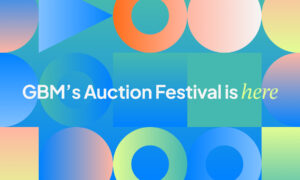Non-fungible tokens are getting popular. But why? NFTs are digital assets, or collectibles, that have a unique identity. They can be passed to others, or traded on the blockchain for other NFTs or cryptocurrencies. They can also be used as proof of ownership for digital art pieces that are copyrighted to the artist who created them. Here’s why you should get excited about these new technology-based assets!
What Are NFTs Exactly?
Put simply, NFTs are unique tokens on the blockchain. Let’s take a look at some examples of these tokens. There are so many popular platforms that fit into this category. You can buy, sell and make NFTs at jungle and thus make a significant investment. Other forms of NFTs are being developed at the moment. For example, some companies are attempting to use these tokens as methods of proving digital ownership. This is particularly useful for creative assets like photos, songs, and video clips that could be copyrighted by an individual without getting tied up in red tape or losing money due to licensing agreements. While this may not have much of an impact now since most creative platforms don’t support this option out-of-the-box yet – it could be potentially revolutionary if they began allowing users to upload information with unique identifiers so that they can get paid for their work.
What’s So Special About Them?
As mentioned above, NFTs have unique identities. This is incredibly useful in a wide range of applications from proving ownership to making digital art available for sale on a platform with a public market without having to go through a physical business or storefront. Although the information contained within these tokens may not always be as “real” as one might hope, it opens up a world of opportunities for creating and distributing content with the added benefits of tracking how things are used and distributed. Digital distribution is not always as foolproof as physical distribution, and this technology has the potential to change that. This makes NFTs potentially useful in any industry that distributes digital information or assets and can also serve as an investment opportunity since some NFTs increase in value over time.
The Exclusivity of NFTs
NFTs are unique tokens, which means that they can be traded or passed on to others. This makes them useful for many platforms that want to incentivize their users. So, if you’re someone who has designed a cool NFT you’ve built in your spare time (or is it spare time when you’re doing something like this?), there’s the potential to make some money off of it through trading or selling on an open market – or even holding onto your “investment” and waiting for the price to go up. Although there were high hopes for blockchain technology even before its mainstream debut, many people had their doubts about whether or not decentralized ledgers could truly affect our daily lives. As more companies begin using this technology to create unique forms of ownership through tokens, we’ll begin seeing a greater number of these NFTs rising in value and getting traded more frequently. The unique nature of this technology will continue to drive the popularity of these assets forward, especially as it becomes a larger part of our daily lives.
Why Should I Care?
Although NFTs might not seem like much now, they have very real (and interesting) uses in terms of managing digital rights and ownership. They also represent an investment opportunity because many NFTs increase in value over time. Other platforms can also make use of these tokens as a form of incentive for users and as a way of proving ownership. Because they’re unique, they’re easier to track as well which means that their uses could be wide-reaching. As more platforms start developing their own NFTs you’ll see them being sold on secondary markets or through trading with others – similar to what you would expect from a collectible item like a baseball card. It’s exciting because it represents the bleeding edge of the internet and how we interact with digital information moving forward. This is going to have major implications outside of cryptocurrency too, so you might want to keep an eye on them even if you’re not into trading or investing in cryptocurrencies.
How Does One Make An NFT?
NFTs are digital assets. There are various available tutorials on how to make them, but it involves using a program called Oxide, which is an offline Javascript-based decentralized application (DApp) framework that can be used to create NFTs. It’s relatively simple once you have the right tools in place, and there are many ways in which these tokens might become a part of our daily lives in the future as more platforms begin making use of different types of NFTs.
What Are Some Examples Of NFTs?
While they’ve been around for a while through platforms like Rare Bits, CryptoKitties was one of the earliest examples of their use since it debuted in 2017. In this case, each token represents a unique collectible cat, which people can buy, sell, or trade with others to try to get their hands on different types. People can purchase digital cats on crypto kitties with ETH and others can breed them to create offspring that retain similar characteristics as their parents. The value of each cat is determined by the combination of the cats’ so-called “cooldown” time and its readability rare, as well as how it is at any given time. Players can sell these crypto kitties for ETH, which they can then withdraw to their wallets or use for other purchases on the platform. Although these crypto kitties are digital, they still require a form of physical storage. This means that people who got in early and bought large stacks of them won big when the platform took off. The same can be said for other NFTs such as “paid subscriptions,” which offer rare and unique options to their users.

These are still early days for non-fungible tokens, but their number is rising rapidly with new NFTs being developed every day. The potential for these tokens to open up a whole new way of thinking about digital rights and ownership means that they have the potential to change the internet as we know it.



































